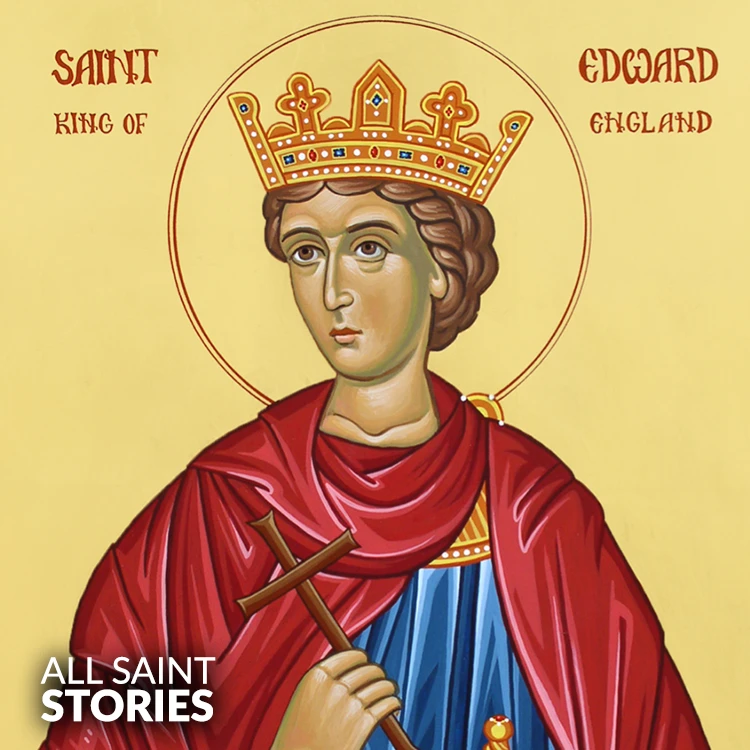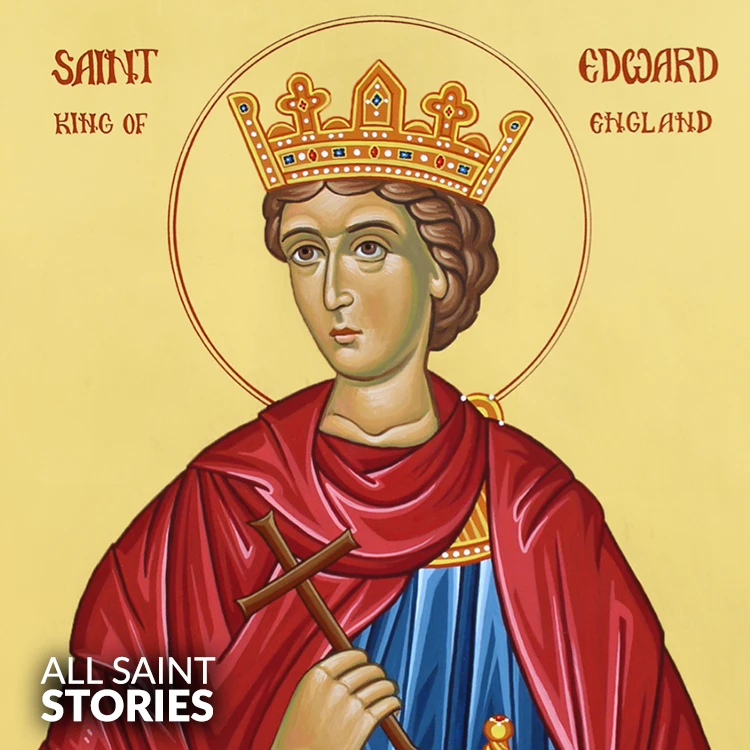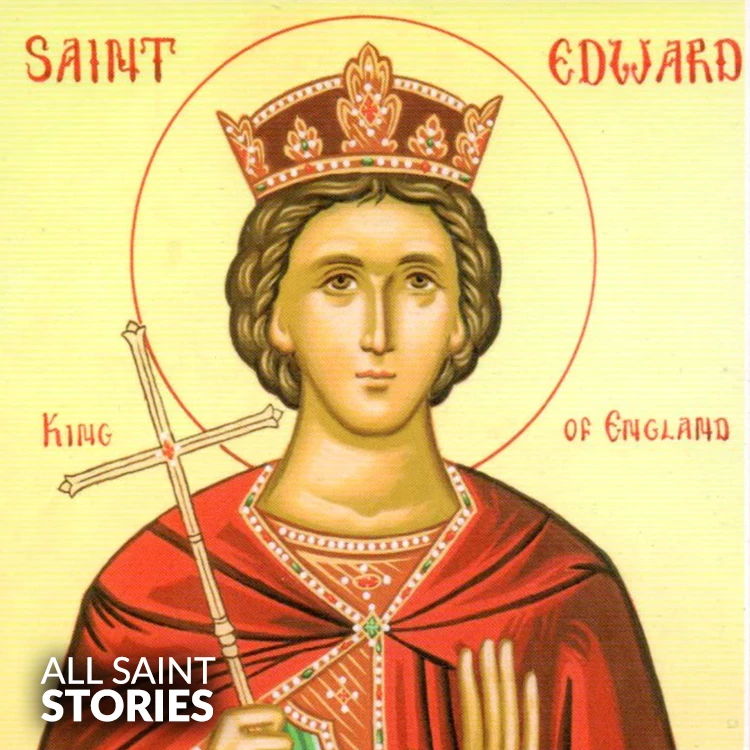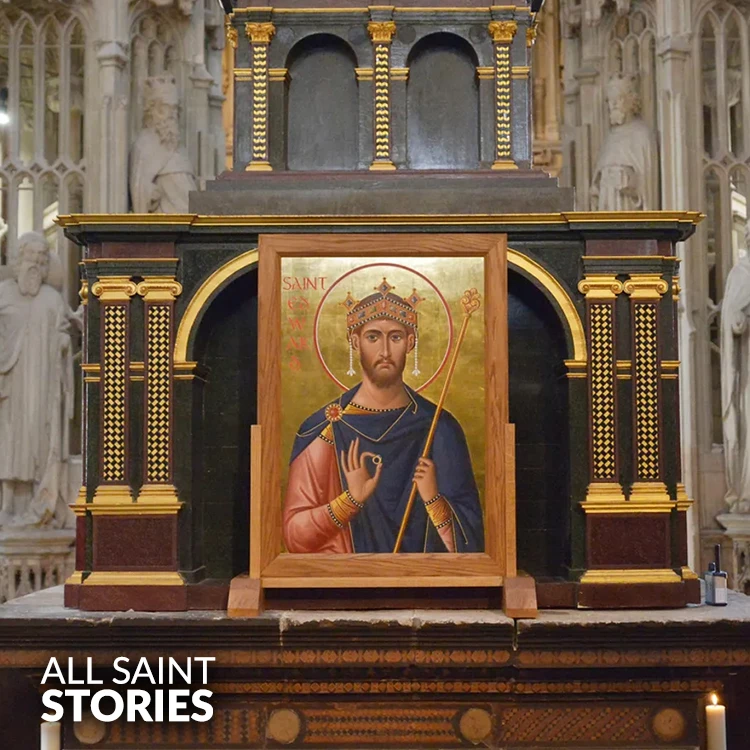"Saint Edward, noble King and servant of God, Guide us with your wisdom and compassion. Help us to live with humility and justice, And to always seek God’s will in our lives. Pray for us, that we may walk in your footsteps, And may we find strength in your example. Amen."
ST. EDWARD KING
ST. EDWARD KING

St. Edward the Confessor was the King of England from 1042 to 1066. Known for his piety, generosity, and devotion to God, he was regarded as a just and merciful ruler. He built Westminster Abbey, where he was later buried, and was canonized in 1161 for his holy life.
St. Edward the Confessor was born in 1003 AD to King Æthelred the Unready and Queen Emma of Normandy. As a child, he was sent into exile in Normandy after the Danish invasion of England. He spent many years in a monastic environment, developing a deep spirituality that would later define his reign as king.
In 1042, after the death of the Danish King Harthacnut, Edward was invited to return to England and was crowned King of England. His reign was marked by peace and stability, and he was known for his gentle rule, avoidance of war, and acts of charity. Unlike other medieval rulers, he focused on justice, faith, and the welfare of his people rather than expansion through conquest.
One of Edward’s greatest contributions was the construction of Westminster Abbey, which became the center of English religious life. The abbey was consecrated shortly before his death and remains one of the most significant churches in England today.
Despite being married to Queen Edith, Edward took a vow of chastity, leading to his reputation as a Confessor (a saintly title given to those who lived a holy life but were not martyred). He was believed to have performed miracles, including healing the sick and predicting future events.
Edward died on January 5, 1066, and was buried in Westminster Abbey. His death led to a succession crisis, ultimately resulting in the Norman Conquest of England. Over a century later, in 1161, he was canonized by Pope Alexander III, becoming one of England’s most beloved saints.
St. Edward is often depicted as a king holding a ring or a scepter, symbolizing his righteous rule. He is remembered as the last Anglo-Saxon king of England and a model of Christian kingship.
Video Not Found
The information on this website is compiled from various trusted sources. While we aim for accuracy, some details may be incomplete or contain discrepancies.
If you notice any errors or have additional information about this saint, please use the form on the left to share your suggestions. Your input helps us improve and maintain reliable content for everyone.
All submissions are reviewed carefully, and your personal details will remain confidential. Thank you for contributing to the accuracy and value of this resource.
Credits & Acknowledgments
- Anudina Visudhar (Malayalam) – Life of Saints for Everyday
by Msgr. Thomas Moothedan, M.A., D.D. - Saint Companions for Each Day
by A. J. M. Mausolfe & J. K. Mausolfe - US Catholic (Faith in Real Life) – Informational articles
- Wikipedia – General reference content and images
- Anastpaul.com – Saint images and reflections
- Pravachaka Sabdam (Malayalam) – Saint-related content and insights
We sincerely thank these authors and platforms for their valuable contributions. If we have unintentionally missed any attribution, please notify us, and we will make the correction promptly.
If you have any suggestion about ST. EDWARD KING
Your suggestion will help improve the information about this saint. Your details will not be disclosed anywhere.
© 2025 Copyright @ www.allsaintstories.com




 English
English
 Italian
Italian
 French
French
 Spanish
Spanish
 Malayalam
Malayalam
 Russian
Russian
 Korean
Korean
 Sinhala
Sinhala
 Japanese
Japanese
 Arabic
Arabic
 Portuguese
Portuguese
 Bantu
Bantu
 Greek
Greek
 German
German
 Dutch
Dutch
 Filipino
Filipino